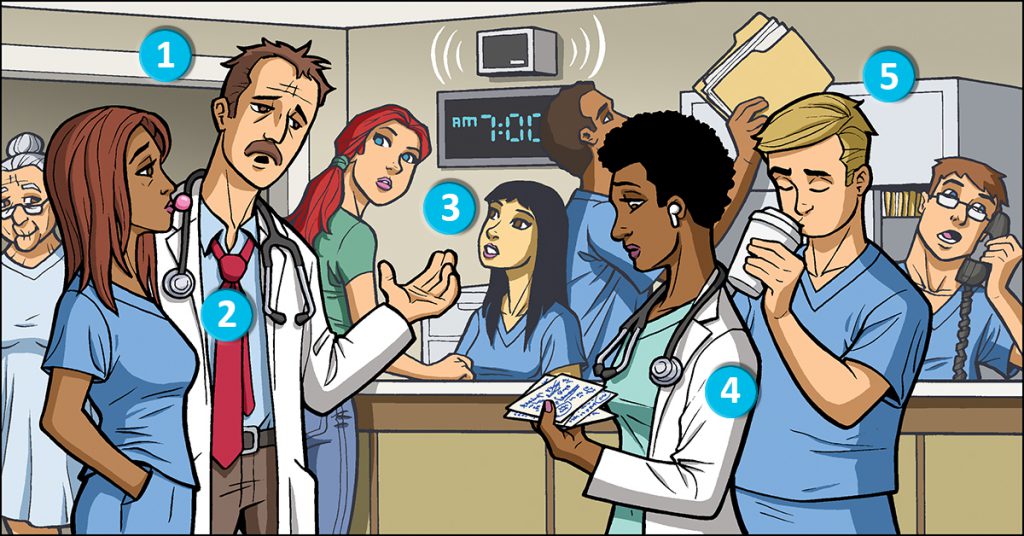
1. PROBLEM: Lack of Attention
The physician on the left—who clearly has been on duty or on call all night—is attempting to convey information about his patients to the incoming providers. However, the incoming physician appears unengaged and is unhappily scanning the notes in her hand and has a wireless earbud in her ear. The nurse on the right is concentrating on drinking his coffee and seems to be paying no attention to the hand-off at all. Moreover, the team members’ focus is not enhanced by the fact that they are choosing to conduct a hand-off in a chaotic, noisy environment.
2. PROBLEM: Unprofessionalism
Both the outgoing and incoming providers are showing some degree of unprofessionalism. The outgoing physician appears disheveled, the outgoing nurse is blowing bubblegum, the incoming doctor has an earbud in her ear, and the incoming nurse is focused on his coffee.
3. PROBLEM: Privacy Breaches
Conducting a patient hand-off in a noisy environment such as in front of the nursing station can lead not only to an ineffective and inaccurate transfer of patient information but also to HIPAA violations. In this scenario, the conversation can potentially be overheard by other staff members as well as by visitors (like the red-haired woman in the green shirt) and patients (like the elderly woman on the left).
4. PROBLEM: Quality-of-Care Issues
Because several of the providers are not paying close attention to the hand-off process in this scenario and have no way to document any patient information that is being provided, it is very possible that the quality of care will suffer. The incoming providers may overlook concerning patient symptoms or trends, possibly leading to a failure to diagnose the patient correctly or to provide appropriate care.
5. PROBLEM: Lack of Documentation
In this scenario, no one is taking notes or otherwise documenting the conversation. This could lead to the omission of critical details or the inclusion of inaccurate information—especially if providers wait to document the information that was conveyed until after the hand-off or fail to document it at all. An hours-long delay in documentation caused by a hectic clinical schedule could make it more difficult for providers to remember exact details and could lead to questions about the chart’s accuracy if there is a poor outcome and a malpractice case ensues.
